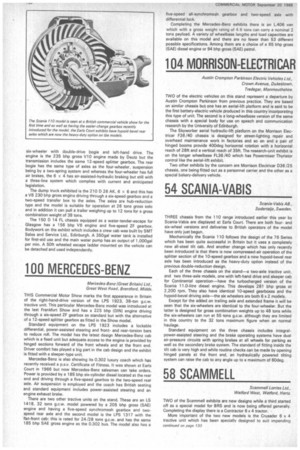54 SCANIA-VABIS
Page 134

If you've noticed an error in this article please click here to report it so we can fix it.
Scania-Vabis AB., Sodertalje, Sweden.
THREE chassis from the 110 range introduced earlier this year by Scania-Vabis are displayed at Earls Court. There are both fourand six-wheel versions and deliveries to British operators of the model have only just begun.
Mechanically the Scania 110 follows the design of the 76 Series which has been quite successful in Britain but it uses a completely new all-steel tilt cab. And another change which has only recently been introduced is that there is now compressed-air operation of the splitter section of the 10-speed gearbox and a new hypoid-bevel rear axle has been introduced as the heavy-duty option instead of the previous double-reduction design.
Each of the three chassis on the stand—s two-axle tractive unit, and two three-axle models, one with left-hand drive and sleeper cab for Continental operation—have the turbocharged version of the Scania 11.0-litre diesel engine. This develops 281 bhp gross at 2,200 rpm. They also have identical 10-speed gearboxes and the hypoid-bevel driving axle—the six wheelers are both 6 x 2 models.
Except for the added on trailing axle and extended frame it will be seen that the six-wheelers are identical to the four-wheeler. But the latter is designed for gross combination weights up to 48 tons while the six-wheelers can run at 55 tons g.c.w. although they are limited in this country to the 32 tons maximum figure when on normal haulage.
Standard equipment on the three chassis includes integralpower-assisted steering and the brake operating systems have dual air-pressure circuits with spring brakes at all wheels for parking as well as the secondary brake system. The standard of fitting inside the tilt cab is very high and while routine checks can be made by opening hinged panels at the front end, an hydraulically powered tilting system can raise the cab to any angle up to a maximum of 60deg.


















































































































































































































































































































































































